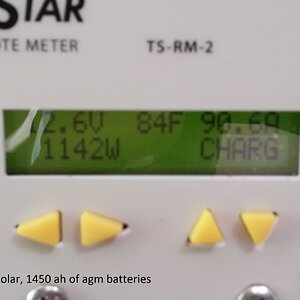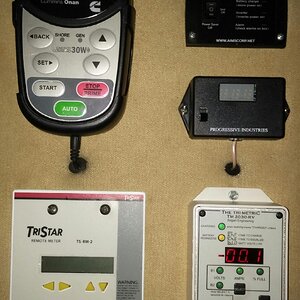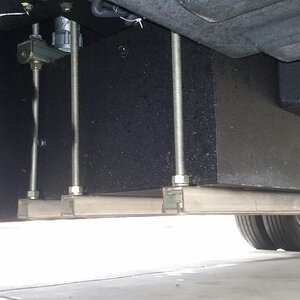AbdRahim
RVF Supporter
- Joined
- Dec 25, 2019
- Messages
- 3,923
- RV Year
- 2020
- RV Make
- Newmar
- RV Model
- BayStar 3626
- RV Length
- 37’
- Chassis
- Ford
- Engine
- V10
- TOW/TOAD
- None
I have been using TST 507 flow throughs for eight years now, with no problems (up to 80 mph in the class C). I do use the lock nuts to prevent them from loosening. The rear dually has a rubber insert in the wheel to hold it steady (purchased separately). This is absolutely essential.
Another thing to consider is using the manual tire pressure guage often may increase chances of leaks from manipulating the valve stem. Now since I check tire pressure at the beginning of every day on the road, it is much more convenient to push the button and instantly see the pressure and, and temperature of each tire without having to stoop down and play with the valve stems.
From a safety standpoint, it is also helpful to know if a wheel is over heating (perhaps due to a brake caliper sticking, or loss of pressure in a given tire).
On a recent trip one tire had a temperature of 137*F. They usually run 100-118. It was a very hot day. After stopping for a half hour or so to let things cool down, and check the temperature of the wheel. It was comforting to see the temperature drop to 109, when I resumed driving. I would not drive a large vehicle of any type without a TPMS, if I could help it.
There commended cold tire pressure takes into accout the the tires heat up while driving, so it really does make a difference whether the cold pressure is 65 or 75.
Another thing to consider is using the manual tire pressure guage often may increase chances of leaks from manipulating the valve stem. Now since I check tire pressure at the beginning of every day on the road, it is much more convenient to push the button and instantly see the pressure and, and temperature of each tire without having to stoop down and play with the valve stems.
From a safety standpoint, it is also helpful to know if a wheel is over heating (perhaps due to a brake caliper sticking, or loss of pressure in a given tire).
On a recent trip one tire had a temperature of 137*F. They usually run 100-118. It was a very hot day. After stopping for a half hour or so to let things cool down, and check the temperature of the wheel. It was comforting to see the temperature drop to 109, when I resumed driving. I would not drive a large vehicle of any type without a TPMS, if I could help it.
There commended cold tire pressure takes into accout the the tires heat up while driving, so it really does make a difference whether the cold pressure is 65 or 75.
Last edited:












